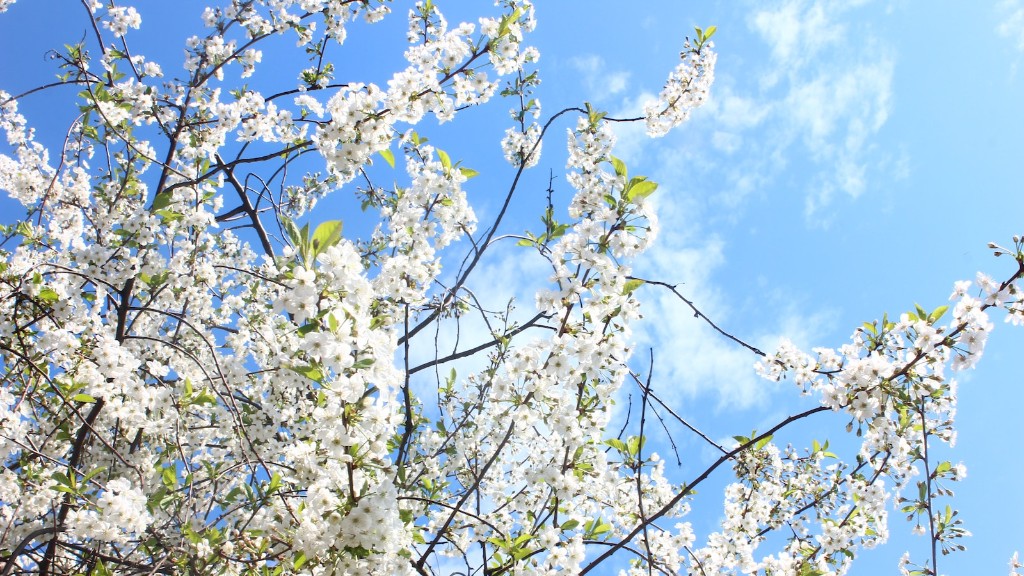How Cold Can an Avocado Tree Get?
The avocado tree (Persea americana) is often referred to as the “superfood tree” due to its high nutritional value and ability to thrive in tropical and subtropical climates. Avocado trees need warmth and humidity to survive and flourish, but are surprisingly hardy and able to withstand very low temperatures. But just how cold can an avocado tree tolerate?
Avocado trees are widely regarded as a subtropical species, meaning that they can tolerate temperatures as low as 28 to 32 degrees Fahrenheit (-2 to 0 degrees Celsius). While this has typically been the low end threshold for avocado tree growth, a recent study has shown that the trees can survive temperatures as low as 25 degrees Fahrenheit (-4 degrees Celsius) if given appropriate protection. This means that in some hardier mountainous regions, avocado trees may be able to tolerate even colder temperatures.
While some avocado tree owners have achieved success in growing avocado trees in climates where temperatures can dip below freezing, it’s important to be aware that cold snaps can cause serious damage to the trees. Frost can damage the leaves and stems of avocado trees, cause bud drop, and even kill off young trees. It’s important to take caution if temperatures are expected to drop below 28 degrees Fahrenheit (-2 degrees Celsius).
Avocado tree owners should also be aware that cold temperatures can cause physiological damage to the tree, even if it doesn’t appear visibly damaged. The cold temperatures can negatively affect the metabolism and nutrient uptake of the leaves, resulting in stunted growth and poor fruit yields. While temperatures below the freezing point are most damaging, the trees can also be harmed by light freezing temperatures if they persist for a long period of time.
The best way to protect an avocado tree from cold temperatures is to insulate it. Covering the tree with a thick blanket can help to keep it warm, and for added protection, you can place an incandescent light bulb or heat lamp near the tree. Make sure to check the temperature of the tree periodicaly, as excessive heat can also be damaging. You can also mulch around the tree to help insulate the roots and keep the temperature more consistent.
When it comes to cold temperatures, the hardiest avocado trees are those that have the chance to acclimatize to the cold climate gradually. Trees that are transferred quickly to a colder climate are more prone to damage, as sudden temperature changes can cause additional stress. Trees that are allowed to gradually adapt to cooler temperatures during the winter months are better equipped to withstand cold temperatures.
How Cold Temperatures Affect Flowering and Fruiting of an Avocado Tree
While cold temperatures can damage an avocado tree, exposure to cold temperatures is often necessary in order to flower and fruit. Exposure to cool temperatures (30°F/1°C to 50°F/10°C) during winter months is essential for flower bud set and proper fruit development. Flower bud set occurs when temperatures are below 55 degrees Fahrenheit (12.7 degrees Celsius). Without flower buds, the tree will not produce any fruit.
It can be difficult to find the balance between exposing the tree to cold temperatures for proper fruiting and keeping the tree healthy in cold conditions. If possible, it’s best to keep the tree sheltered and warm, and supplement cold exposure with occasional cooler nights. It is also important to make sure that the temperature fluctuates gradually – sudden cold snaps can be very damaging to the tree.
In regions where temperatures drop very low during winter months, it may be necessary to provide additional protection to the tree. Wrapping the trunk and branches with plastic or burlap can help insulate the buds and protect them from frost damage. It is also a good idea to inspect the tree periodically during cold weather to make sure it is in good health.
How to Choose a Cold-Hardy Avocado Tree
When selecting an avocado tree, it is important to choose a variety that is cold hardy and capable of surviving in colder climates. The ‘Hass’ varietal is widely considered to be one of the most cold hardy avocados, and is capable of withstanding temperatures as low as 26 degrees Fahrenheit (-3 degrees Celsius). Other cold hardy varieties include the ‘Fuerte’ and ‘Gem’ varietals.
When purchasing an avocado tree, it is important to choose a healthy specimen. Look for a tree with a single, healthy trunk and plenty of strong and vibrant leaves. It is also important to choose a variety that is suited to the climate – if the tree is unlikely to survive the cold temperatures, then it won’t produce any fruit and will simply be a waste of money and space.
Avocado trees should be planted in a sheltered area away from wind and other extreme conditions. Positioning the tree in a spot with afternoon shade can also help it to withstand cold weather. During cold snaps, it is important to move the tree to an even more protected and warm area, such as in a greenhouse or shed.
Protecting your Avocado Tree against Cold Temperatures
When it comes to protecting an avocado tree from cold temperatures, the key is to find the right balance. Providing adequate insulation, choosing a variety that is cold hardy, and positioning the tree in a sheltered location are all essential steps to protect your tree from the cold. It is also important to monitor the temperature of the tree and make adjustments if needed. With the right precautions, avocado trees can thrive even in cold climates.
Tips for Growing Avocado Trees in Cold Climates
Growing an avocado tree in a cold climate can be challenging, but it is not impossible. By following a few simple tips, you can help ensure that your tree thrives and yields large quantities of fruit even in colder climates.
- Choose a cold hardy variety, such as the ‘Hass’ or ‘Fuerte’.
- Position the tree in a sheltered location away from extreme conditions, such as wind and frost.
- Provide extra insulation during cold snaps, such as covering the tree with a thick blanket.
- Make sure the tree receives enough sunlight and water.
- Avoid fertilizing during winter months, as this can make the tree more prone to frost damage.
Providing Supplemental Heat to your Avocado Tree
In cold climates, supplemental heat can be used to help an avocado tree survive the winter months. Supplemental heat not only keeps the tree warm, but also helps it to set flower buds and better produce fruit. The use of incandescent light bulbs, heating mats, and electric blankets can all help to raise the temperature of the tree and give it a boost during cold months.
It’s important to monitor the temperature carefully when using supplemental heat, as excessive heat can also be damaging to the tree. The air temperature of the tree should not exceed 70 degrees Fahrenheit (21 degrees Celsius). It’s also important to make sure that the tree has access to proper air circulation, avoiding air pockets that can generate excessive heat and damage the tree.
Summary
Avocado trees are typically considered tropical species, but they are surprisingly hardy and able to withstand very low temperatures. While avocado trees can handle temperatures as low as 28 to 32 degrees Fahrenheit (2 to 0 degrees Celsius), they may be able to tolerate even colder temperatures with appropriate protection. Cold temperatures can negatively affect the metabolism and nutrient uptake of the leaves, resulting in stunted growth and poor fruit yields. To protect your tree, it’s important to insulate it, choose a cold hardy variety, and provide supplemental heat if necessary. With the right precautions, avocado trees can thrive even in cold climates.



